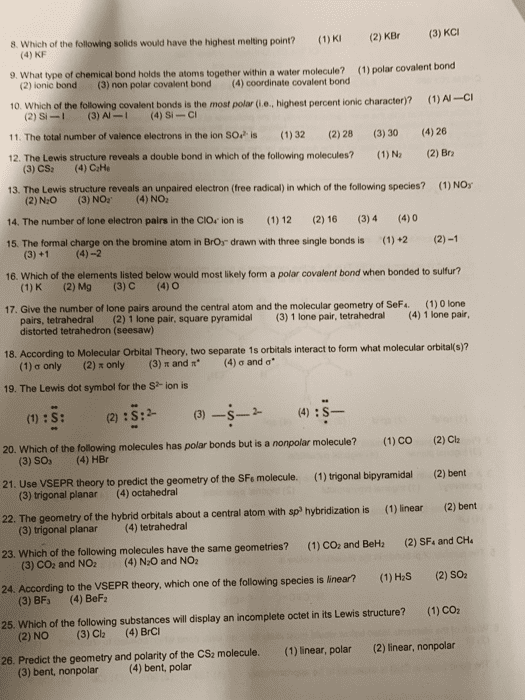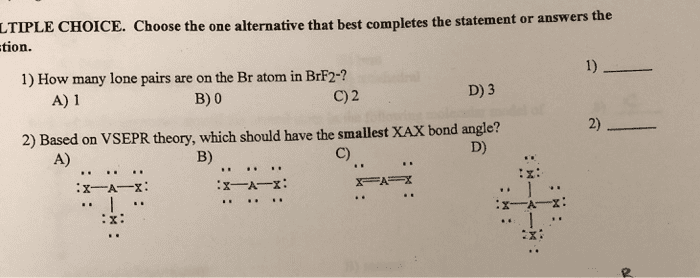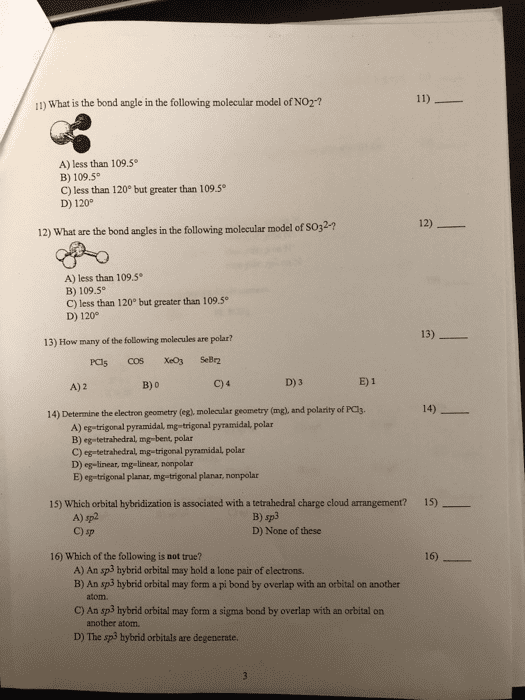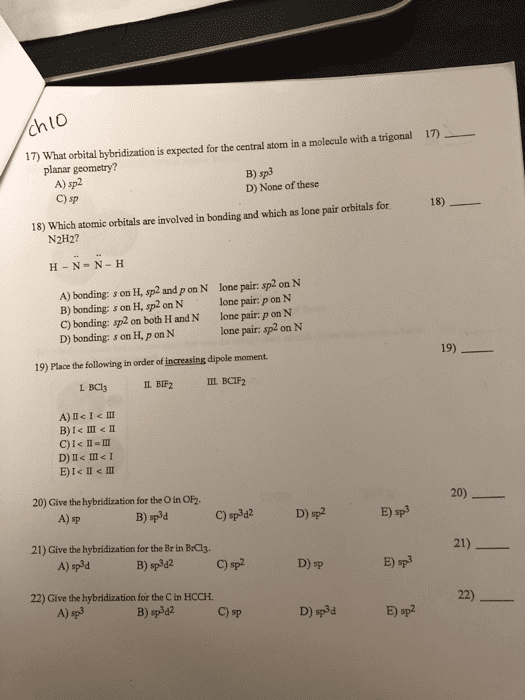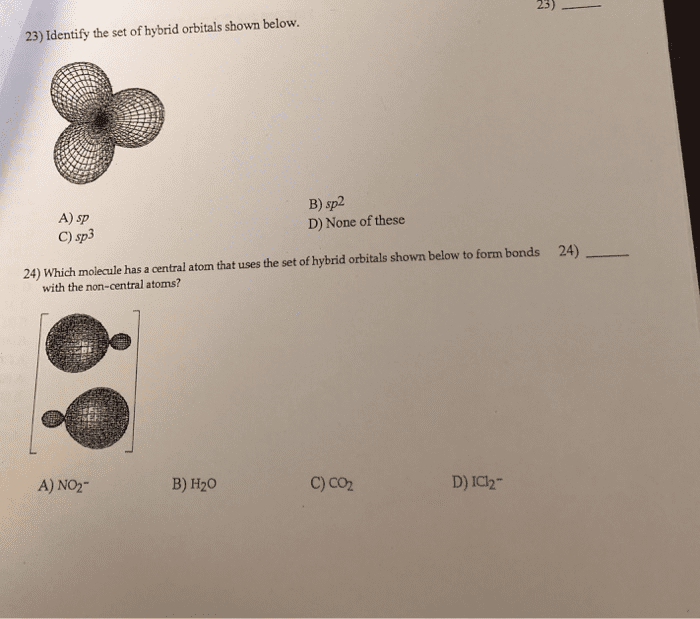CHEM 110 Lecture Notes - Lecture 16: Valence Bond Theory, Sigma Bond, Unpaired Electron
7 views2 pages

Friday, October 13, 2017
Hybridization
CHEM 110
-Covalent Bonds
•E is released when bonds form
•E is absorbed when bonds break
-Hydrogen Molecule
•Held together by an electrostatic
-Diatonic Fluorine Molecule
•1 unpaired electron, like hydrogen
•2 of them: produce a bond between the fluorines on Pz, sigma
bond
•2 electrons can move throughout new sigma bonding orbital
-Diatomic means “2 atoms”
•Carbon oxide, for ex.
-Diatomic Oxygen
•2 pi bond
•electron density above and below bond.
-Valence Bond Theory
•Covalent bonds result from overlap of atomic orbitals, usually each contains 1
electron
•Limitation: Does not describe geometry (unless diatomic)
-Orbitals
•Tetrahedral (AX4) = mix 4, methane is ex.)
•4 e group, 4 hybrid orbitals
-109 degree normally
1
LY
Unlock document
This preview shows half of the first page of the document.
Unlock all 2 pages and 3 million more documents.
Already have an account? Log in

37
CHEM 110 Full Course Notes
Verified Note
37 documents
Document Summary
Covalent bonds: e is released when bonds form, e is absorbed when bonds break. Hydrogen molecule: held together by an electrostatic. Diatonic fluorine molecule: 1 unpaired electron, like hydrogen, 2 of them: produce a bond between the uorines on pz, sigma bond, 2 electrons can move throughout new sigma bonding orbital. Diatomic means 2 atoms : carbon oxide, for ex. Diatomic oxygen: 2 pi bond, electron density above and below bond. Valence bond theory: covalent bonds result from overlap of atomic orbitals, usually each contains 1 electron, limitation: does not describe geometry (unless diatomic) Orbitals: tetrahedral (ax4) = mix 4, methane is ex. , 4 e group, 4 hybrid orbitals. Not quite: make 2 new atomic hybrid orbitals. Sp hybrid orbitals: hybridization = mixing the valence atomic orbitals on an element, method to achieve appropriate orbital geometries for building molecules, making bonds with sp3d hybrid orbitals.
Get access
Grade+20% off
$8 USD/m$10 USD/m
Billed $96 USD annually

Homework Help
Study Guides
Textbook Solutions
Class Notes
Textbook Notes
Booster Class
40 Verified Answers
Class+
$8 USD/m
Billed $96 USD annually

Homework Help
Study Guides
Textbook Solutions
Class Notes
Textbook Notes
Booster Class
30 Verified Answers
Related textbook solutions
Chemistry: Structure and Properties
2 Edition,
Tro
ISBN: 9780134293936
Basic Chemistry
5 Edition,
Timberlake
ISBN: 9780134138046
Principles of Chemistry Molecular Approach
4th Edition,
Tro
ISBN: 9780134112831
Chemistry: Structure and Properties
2nd Edition,
Tro
ISBN: 9780134293936
Principles of Chemistry Molecular Approach
3rd Edition, 2014
Tro
ISBN: 9780321971944
Chemistry: A Molecular Approach
3rd Edition,
Tro
ISBN: 9780321809247
Chemistry: A Molecular Approach
5th Edition,
Tro
ISBN: 9780134874371
Principles of Chemistry: A Molecular Approach
4th Edition,
Tro
ISBN: 9780134895741
Chemistry: The Central Science
14th Edition, 2017
Brown
ISBN: 9780134414232
